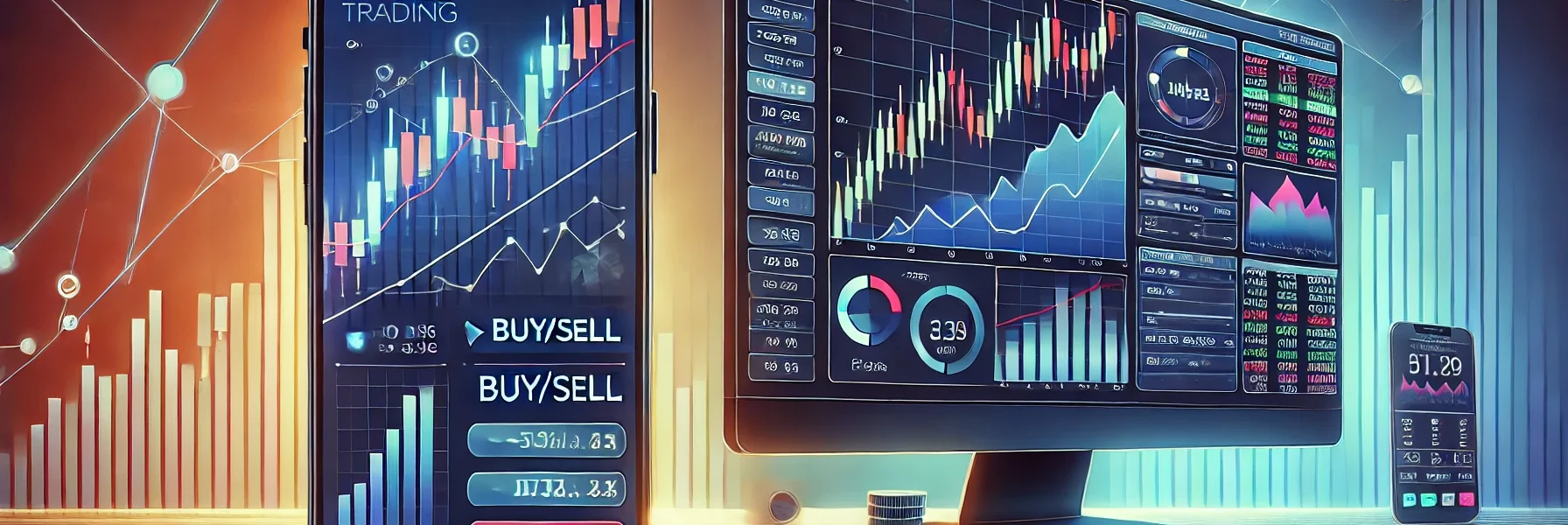Mobile vs. Desktop Trading: Which Investment Platform Offers the Best Experience?
Introduction
The rise of online trading has provided investors with two primary ways to manage their investments: mobile trading apps and desktop platforms. While both offer unique benefits, choosing the right platform can significantly impact your trading experience, efficiency, and overall success.
In this article, we’ll compare mobile and desktop trading platforms based on key factors like user experience, speed, features, security, and accessibility. Whether you’re a beginner or an advanced trader, this guide will help you decide which platform best suits your investment style and goals.
1. Mobile Trading: Convenience at Your Fingertips
1.1. What is Mobile Trading?
Mobile trading allows investors to buy and sell stocks, ETFs, cryptocurrencies, and other assets using a smartphone or tablet. These apps offer seamless access to financial markets, enabling trading on the go.
1.2. Pros of Mobile Trading
✅ Convenience & Accessibility – Trade anytime, anywhere with just a smartphone. ✅ User-Friendly Interface – Simplified layouts and intuitive design for easy navigation. ✅ Push Notifications & Alerts – Get instant updates on stock prices, market trends, and trade executions. ✅ Quick Execution – Ideal for short-term traders who need to react quickly to market movements. ✅ Biometric Security Features – Many apps offer fingerprint or facial recognition for secure access.
1.3. Cons of Mobile Trading
❌ Limited Screen Space – Charts, graphs, and trading tools may feel cramped on a small screen. ❌ Reduced Analytical Tools – Fewer advanced charting and research options compared to desktop platforms. ❌ Potential Distractions – Trading on a mobile device may lead to impulsive decisions.
1.4. Best Mobile Trading Platforms
- Robinhood – Best for commission-free, beginner-friendly trading.
- Webull – Offers advanced charting tools for active traders.
- TD Ameritrade Mobile – Comprehensive research and trading tools.
- Fidelity Mobile – Great for long-term investors with strong customer support.
2. Desktop Trading: Advanced Tools for Serious Investors
2.1. What is Desktop Trading?
Desktop trading platforms are software or web-based portals that allow investors to manage portfolios, conduct market research, and execute trades from a computer.
2.2. Pros of Desktop Trading
✅ Larger Screen & Better Visualization – Easier access to detailed charts, graphs, and trading indicators. ✅ Advanced Research Tools – Includes in-depth analytics, fundamental data, and real-time market insights. ✅ Better Order Execution – Faster trade processing with advanced options like stop-loss and limit orders. ✅ Multi-Screen Functionality – Traders can use multiple monitors for an enhanced experience. ✅ Customizable Interface – Many platforms allow traders to personalize their dashboard for efficiency.
2.3. Cons of Desktop Trading
❌ Lack of Portability – Tied to a specific location, reducing the ability to trade on the go. ❌ More Complex Interface – Steeper learning curve for beginners. ❌ May Require High-Speed Internet – Some platforms perform best with strong connectivity.
2.4. Best Desktop Trading Platforms
- ThinkorSwim by TD Ameritrade – Excellent for advanced technical analysis.
- E*TRADE Pro – Offers powerful trading tools for professionals.
- Interactive Brokers – Best for global and institutional traders.
- MetaTrader 4 & 5 – Popular among forex and CFD traders.
3. Feature Comparison: Mobile vs. Desktop Trading
| Feature | Mobile Trading Apps | Desktop Trading Platforms |
|---|---|---|
| Accessibility | 24/7 access on-the-go | Limited to PC/laptop |
| User Experience | Simple & intuitive | Advanced & customizable |
| Trading Tools | Basic charts & analysis | Advanced indicators & analytics |
| Speed | Instant order execution | Faster execution for complex trades |
| Security | Biometric logins & 2FA | Encrypted data & VPN support |
| Best For | Beginners & casual traders | Advanced traders & professionals |
4. Which One is Right for You?
The best platform depends on your trading style, experience level, and investment goals. Consider the following scenarios to help determine which suits you best:
- If you prioritize convenience and quick trades, go for a mobile trading app.
- If you rely on in-depth market research and advanced trading tools, a desktop platform is the better choice.
- If you want a mix of both, many brokers offer synchronized mobile and desktop experiences.
Final Recommendations
- Best for beginners – Robinhood (mobile), Fidelity (desktop)
- Best for active traders – Webull (mobile), ThinkorSwim (desktop)
- Best for long-term investors – Fidelity (both mobile & desktop)
Conclusion
Both mobile and desktop trading platforms have their advantages and drawbacks. While mobile apps provide accessibility and ease of use, desktop platforms offer advanced research tools and better execution options. The ideal choice depends on your trading habits, experience, and investment objectives.
To maximize efficiency, many investors use a combination of both—executing quick trades on mobile while performing in-depth analysis on a desktop. No matter which platform you choose, always ensure it aligns with your financial goals and risk tolerance. Happy investing! 🚀




